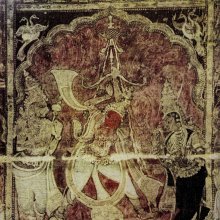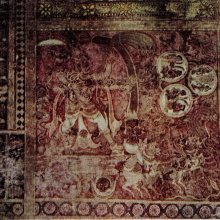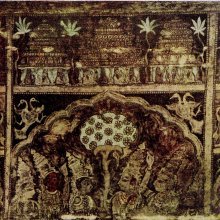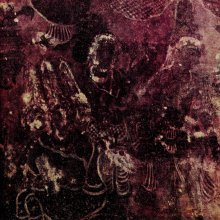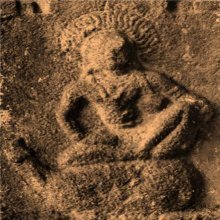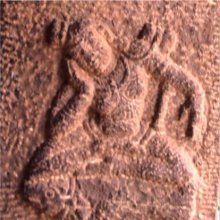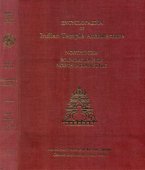Vijayanagara, Vijaya-nagara: 6 definitions
Introduction:
Vijayanagara means something in Hinduism, Sanskrit, the history of ancient India. If you want to know the exact meaning, history, etymology or English translation of this term then check out the descriptions on this page. Add your comment or reference to a book if you want to contribute to this summary article.
Images (photo gallery)
(+42 more images available)
India history and geography
Source: Knowledge Traditions & Practices of India: Architecture (1): Early and Classical Architecture (h)Vijayanagara Temples—The very large and powerful empire of Vijayanagara was established in the ancient city of Vijayanagara (now called Hampi) in Karnataka in 1336. The monarchs of Vijayanagara contributed in no small measure to the development of temple art and architecture in South India. They drew upon the architectural plan of the temples of the Tamil country and constructed the beautiful temples in Hampi such as the Viṭṭhala temple, Acyutarāyā temple and the gopura of the Virupākṣa temple.
Source: Shodhganga: The significance of the mūla-beras (history)Vijayanagara Dynasty (AD 1336):—The last important phase of art in South India is a mingling of late Chalukya and late Chola art under the Vijayanagara monarchs. In the 14th century, the Vijayanagara empire was established. Krishnadevaraya (AD 1509-1529) was a patron of fine arts.

The history of India traces the identification of countries, villages, towns and other regions of India, as well as mythology, zoology, royal dynasties, rulers, tribes, local festivities and traditions and regional languages. Ancient India enjoyed religious freedom and encourages the path of Dharma, a concept common to Buddhism, Hinduism, and Jainism.
Languages of India and abroad
Sanskrit dictionary
Source: DDSA: The practical Sanskrit-English dictionaryVijayanagara (विजयनगर).—Name of a town.
Derivable forms: vijayanagaram (विजयनगरम्).
Vijayanagara is a Sanskrit compound consisting of the terms vijaya and nagara (नगर).
Source: Cologne Digital Sanskrit Dictionaries: Monier-Williams Sanskrit-English DictionaryVijayanagara (विजयनगर):—[=vi-jaya-nagara] [from vi-jaya > vi-ji] n. Name of a town in Karṇāṭa, [Catalogue(s)]
[Sanskrit to German]
Sanskrit, also spelled संस्कृतम् (saṃskṛtam), is an ancient language of India commonly seen as the grandmother of the Indo-European language family (even English!). Closely allied with Prakrit and Pali, Sanskrit is more exhaustive in both grammar and terms and has the most extensive collection of literature in the world, greatly surpassing its sister-languages Greek and Latin.
Kannada-English dictionary
Source: Alar: Kannada-English corpusVijayanagara (ವಿಜಯನಗರ):—[noun] the name of the capital city of Vijayanagar empire; Hampi, near Hosapēṭe, in Karnāṭaka.
Kannada is a Dravidian language (as opposed to the Indo-European language family) mainly spoken in the southwestern region of India.
See also (Relevant definitions)
Partial matches: Vijaya, Nagara, Nakara.
Starts with: Vijayanagara Empire.
Full-text (+99): Virabhupati, Virabhadra, Prataparudra, Narapati, Shrirama, Dannaik, Krishnadevaraya, Shringeri, Venkata, Rajya, Kampana, Tanjore, Virupaksha, Ranganathaswamy, Varadaraja, Bukkaraya, Sudarshanacarya, Vijayanagara Empire, Acuvapati, Ari-rayavipatan.
Relevant text
Search found 29 books and stories containing Vijayanagara, Vijaya-nagara; (plurals include: Vijayanagaras, nagaras). You can also click to the full overview containing English textual excerpts. Below are direct links for the most relevant articles:
Chaitanya Bhagavata (by Bhumipati Dāsa)
Verse 1.13.160-162 < [Chapter 13 - Defeating Digvijayī]
Verse 3.3.270 < [Chapter 3 - Mahāprabhu’s Deliverance of Sarvabhauma, Exhibition of His Six-armed Form, and Journey to Bengal]
Verse 1.9.195 < [Chapter 9 - Nityānanda’s Childhood Pastimes and Travels to Holy Places]
Later Chola Temples (by S. R. Balasubrahmanyam)
Temples in Papanasam < [Chapter XII - Temples of Kulottunga III’s Time]
Temples in Argal (Argalur) < [Chapter XII - Temples of Kulottunga III’s Time]
Temples in Avarani (Abaranadani) < [Chapter XII - Temples of Kulottunga III’s Time]
Maxmuller’s Service to India < [April – June, 2006]
The Reddis and the Rayas - A Page from Deccan History < [November-December 1933]
Reviews < [April 1937]
Middle Chola Temples (by S. R. Balasubrahmanyam)
Temples in Olakkur < [Rajendra Deva II]
Temples in Kulambandal < [Chapter IV - Temples of Rajendra I’s Time]
Temples in Tiruppattur (Tiruppidavur) < [Chapter IV - Temples of Rajendra I’s Time]
Bhagavatpadabhyudaya by Lakshmana Suri (study) (by Lathika M. P.)
Hostile Accounts and Controversies < [Chapter 4 - Similarities and Dissimilarities]
Śaṅkaradigvijaya (list of available works) < [Chapter 4 - Similarities and Dissimilarities]
Vastu-shastra (5): Temple Architecture (by D. N. Shukla)
Bhaumika Vimānas (Temples of South India, Decan and Greater India) < [Chapter 12 - History of Hindu Temples (Prāsādas and Vimānas)]
Vijayanagara Style (1350—1565 A.D.) < [Chapter 12 - History of Hindu Temples (Prāsādas and Vimānas)]
Related products
